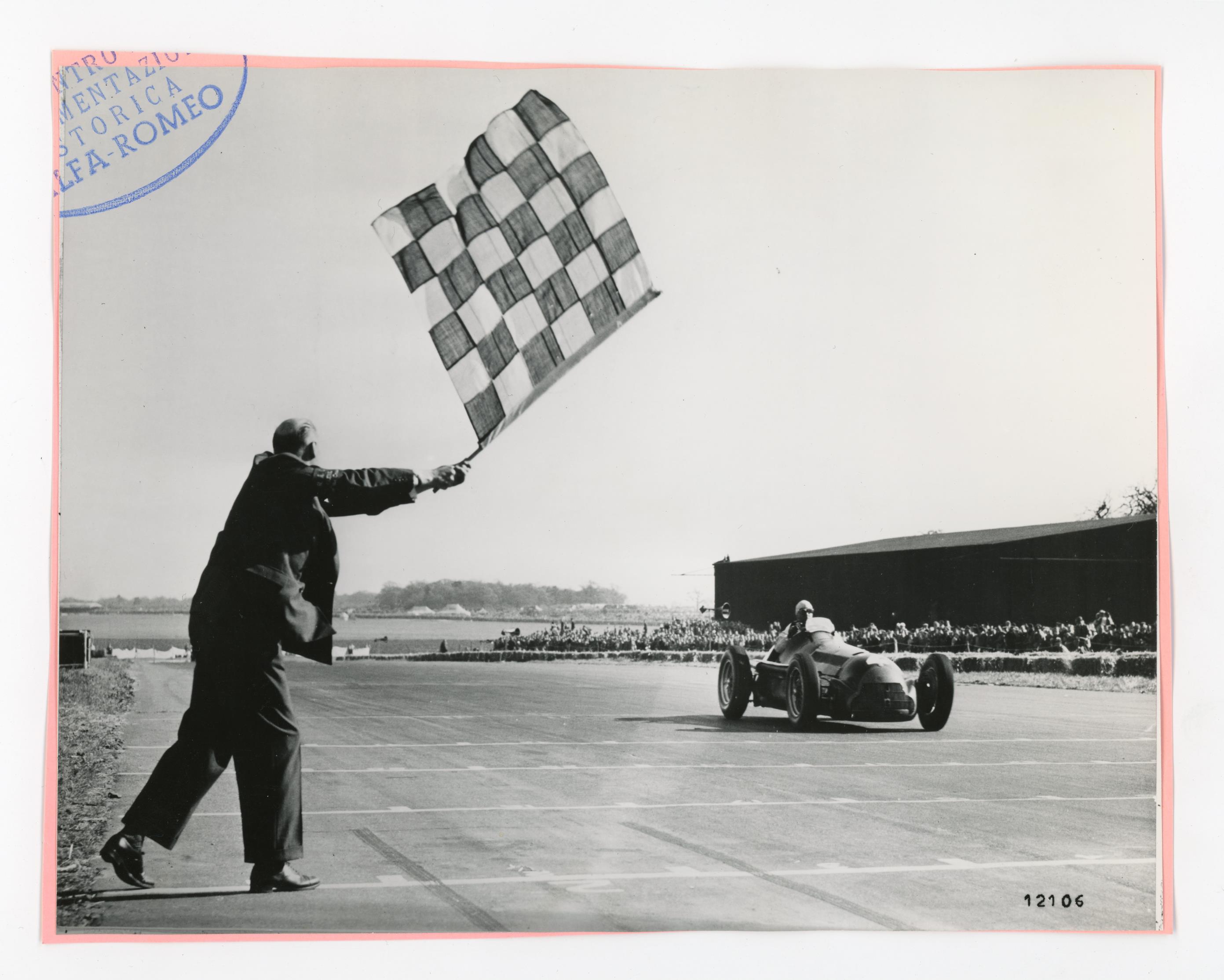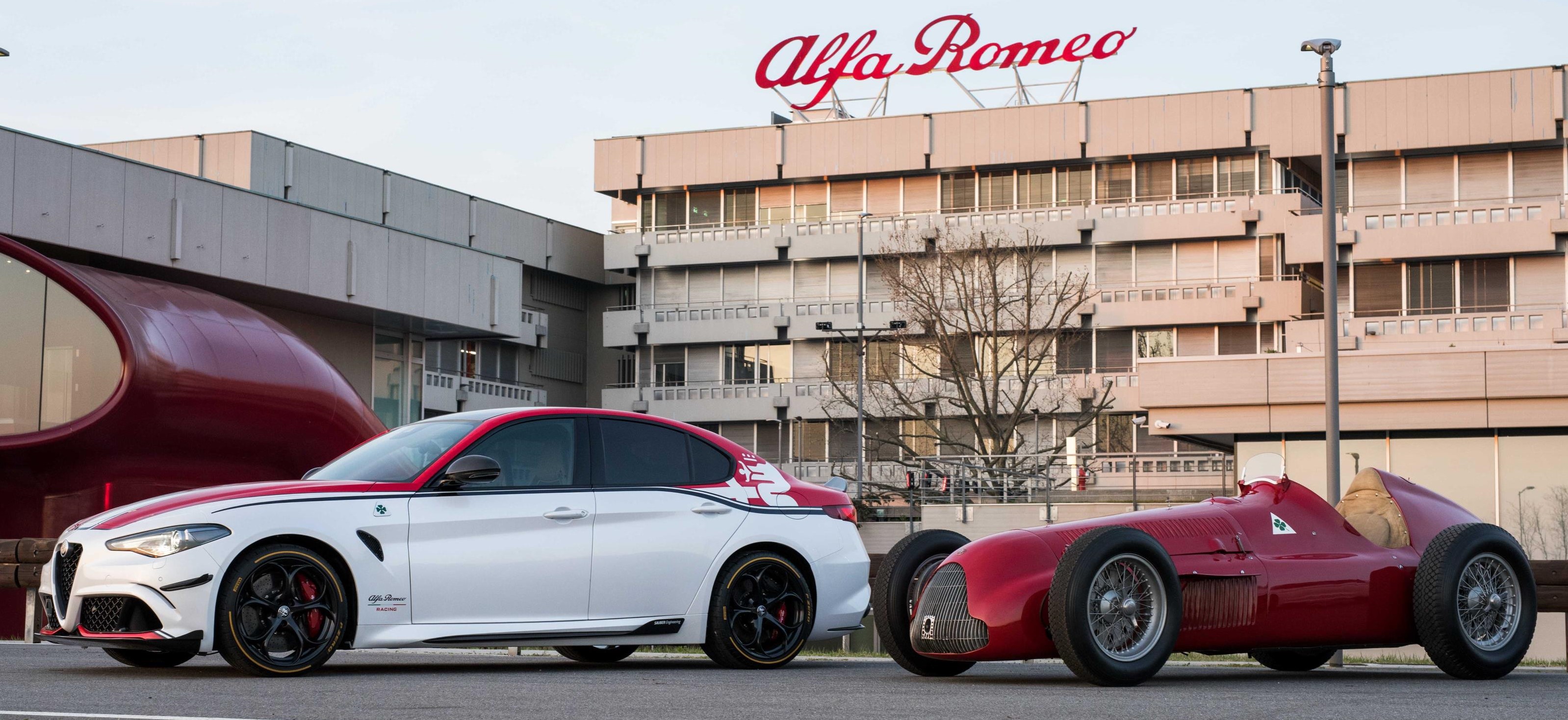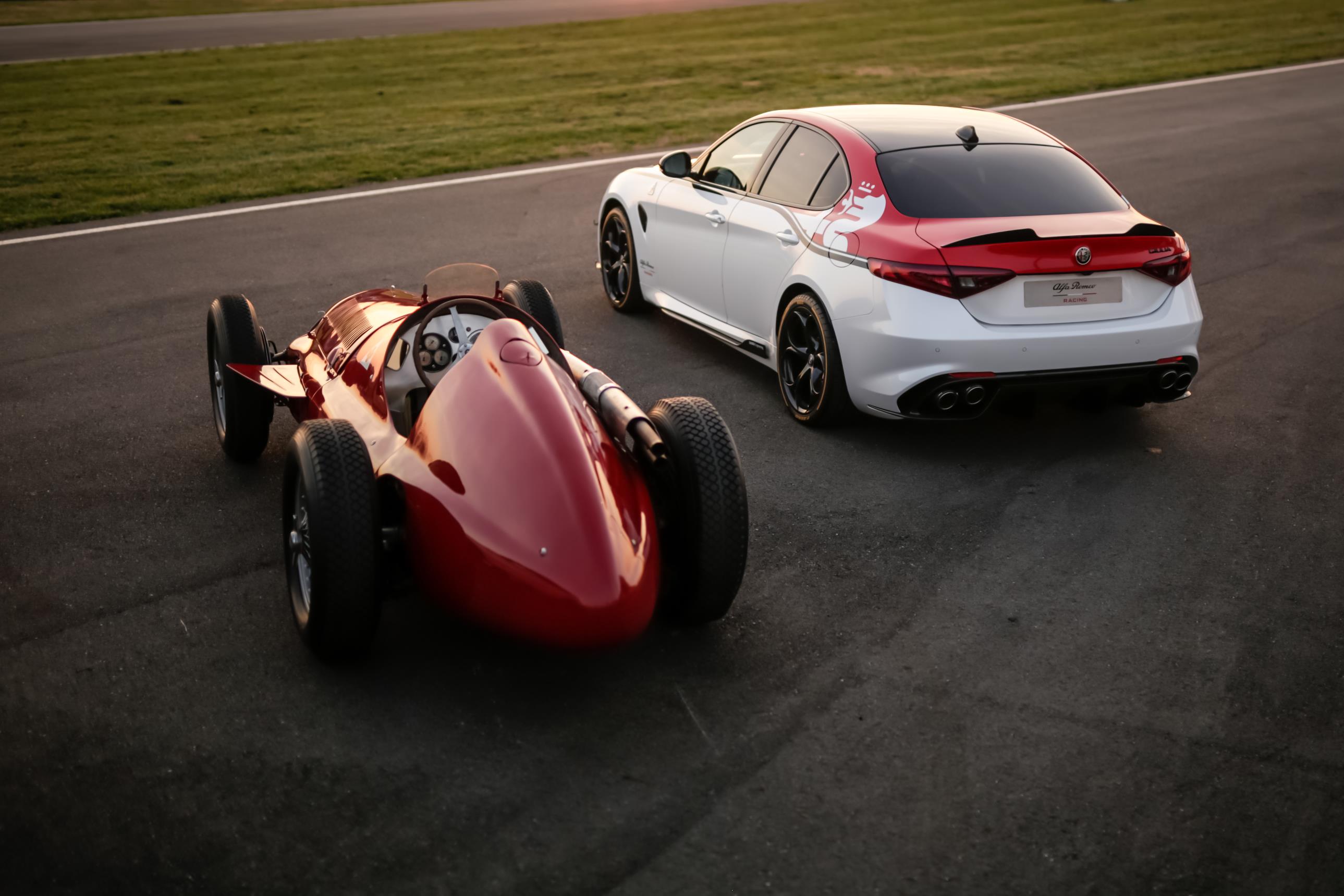The long and exciting history of Formula 1 began in 1950, when the sport went global with the first “Formula 1 World Championship”, which was almost exclusively staged on European circuits. The first race took place on the bends of Silverstone, the time-honoured location of the Grand Prix of Great Britain and still one of the most important tracks on the calendar, on 13 May, 69 years ago. Since then the automotive world has changed radically but two factors remain the same; the enthusiasm of the public and the presence of Alfa Romeo on the Grand Prix start line.
At the first race, the Alfa Romeo racing team presented four 158 single-seaters, driven by Giuseppe “Nino” Farina, Juan Manuel Fangio, Luigi Fagioli and Reg Parnell, the latter as a token of respect towards the host country. The cars took the first four places in the qualifiers and occupied the entire front row of the grid.
Looking back at those days, Alfa Romeo engineer Giuseppe Busso once declared that the real problem for the team of the three “F”s – Farina, Fangio and Fagioli – was to establish the order of the podium. The Alfa Romeo 158 delivered 350hp and touched a top speed of 290km/h. Nino Farina on that momentous 13 May took pole position, the fastest lap and the race.
By the end of the championship the 158 had won six of the seven races valid for the ranking, having deserted the Indianapolis 500 along with all of the European manufacturers. Alfa Romeo remained undefeated after the first race in the Silverstone GP, winning the first three places in the ranking. Nino Farina was the first champion of the newly formed Formula 1. Success was repeated in the following year, when the 159 single-seater won the world title again, this time with champion driver Juan Manuel Fangio behind the wheel.
Since then the sporting legend of Alfa Romeo has seen a string of victories and top-three finishes in many international championships, including Formula 1. The “biscione” emblem is back and after continuous progress and eighth place in the team’s comeback season, this year the new “Alfa Romeo Racing” team will continue to bring the tradition of technical excellence and Italian style, characteristic of the Alfa Romeo brand, to the pinnacles of motorsport competitions.
The “Alfa Romeo Racing” team will be lining up Giovinazzi Antonio, the first Italian driver to regularly appear at the wheel of a Formula 1 for eight years, and 2007 World Champion Kimi Räikkönen, who scored points in the first two races. So continues the legend of the Quadrifoglio, the green cloverleaf emblem that since 1923 has identified the highest performing Alfa Romeo models.
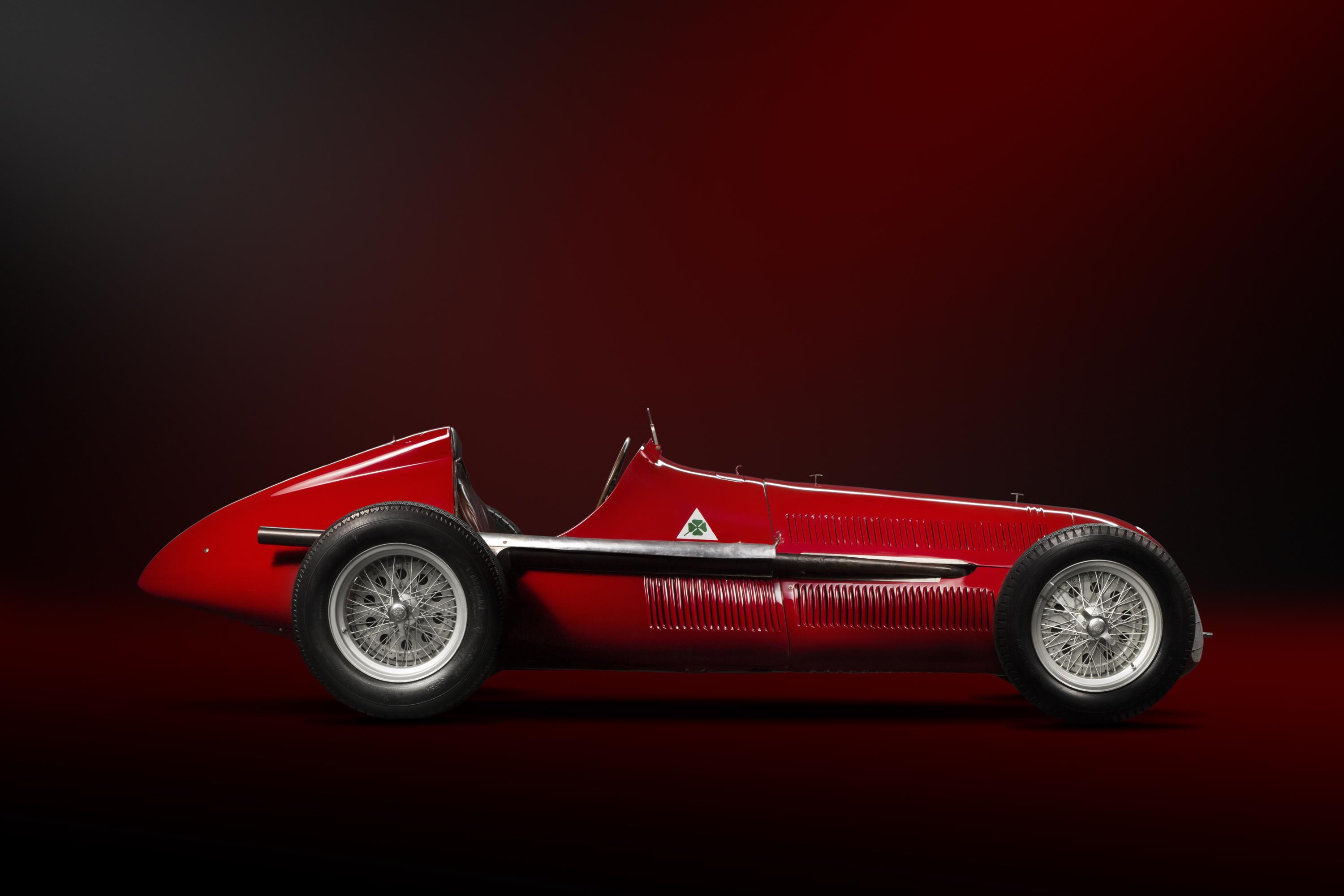
History Of The Quadrifoglio (also called the ‘cloverleaf’)
Since 1923, the Quadrifoglio logo has been the symbol of Alfa Romeo racing cars and since WWII, it has also been used to designate the higher trim models of the range. The Quadrifoglio first use came from the 1923 Targa Florio, an open road endurance race founded in 1906, held in the mountains of Sicily near the island’s capital of Palermo that folded 1977. Alfa Romeo race driver Ugo Sivocci, a superstitious person, painted a four-leaf clover on his Alfa Romeo RL for luck and quickly won the race which was his major racing achievement.
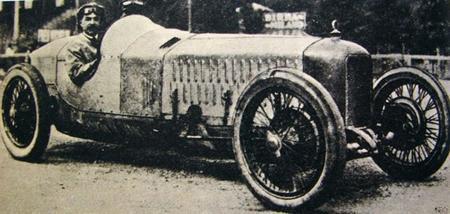
The Alfa Romeo RL was produced between 1922-1927. It was Alfa’s first sport model after World War I. The car was designed in 1921 by Giuseppe Merosi. Three different versions were made: Normale, Turismo and Sport. RL total production was 2640. The RLTF (Targa Florio) was the race version of RL – it weighed half of normal versions, the engine had seven main bearings instead of four and double carburetors. In 1923 Alfa’s race team had drivers like Ugo Sivocci, Antonio Ascari, Giulio Masetti and Enzo Ferrari.
The Alfa Romeo Tipo P1 was the first Grand Prix car made by Alfa Romeo in 1923, designed by Giuseppe Merosi, a famous Italian automobile engineer. The 2-seater race car with FR layout had a 2.0 L straight-6 1990 cc I6 DOHC engine that produced 95 bhp (71 kW) at 5000 rpms with a curb weight of 850 kg (1,874 lb)
Two cars were entered in the Italian GP at Monza in 1923, one for Antonio Ascari and one for Ugo Sivocci. When Sivocci was practicing for the GP on September 8, 1923 he crashed and was killed. Sivocci’s car was painted with the green cloverleaf on a white background that was to become Alfa’s good luck token. His car was carrying number 17, which was never again assigned to Italian racing cars. On the same day of the accident, a press release from engineer Nicola Romeo announced the withdrawal of other Alfa Romeo cars competing. Alfa Romeo withdrew from the competition and development of the car was stopped.
Ugo Sivocci started his racing career with bicycle racing. After World War I, he worked as an auto mechanic in Milan. Being a friend of Enzo Ferrari, he was hired by Alfa Romeo in 1920 to drive Alfa in three-man works team: (Alfa Corse) with Antonio Ascari and Enzo Ferrari. In 1923 he began to drive the Alfa Romeo RL, and quickly won numerous races. In the same year, he won the Targa Florio with RL Targa Florio which was his major racing achievement. The race was a great success for Alfa Romeo as second (Ascari) and fourth places (Giulio Masetti) were occupied by Alfa.
In 1924 a new version Grand Prix car was made and became the Alfa Romeo P2 that won the inaugural Automobile World Championship in 1925, taking victory in two of the four championship rounds when Antonio Ascari drove it in the European Grand Prix at Spa and Gastone Brilli-Peri won the Italian Grand Prix at Monza.
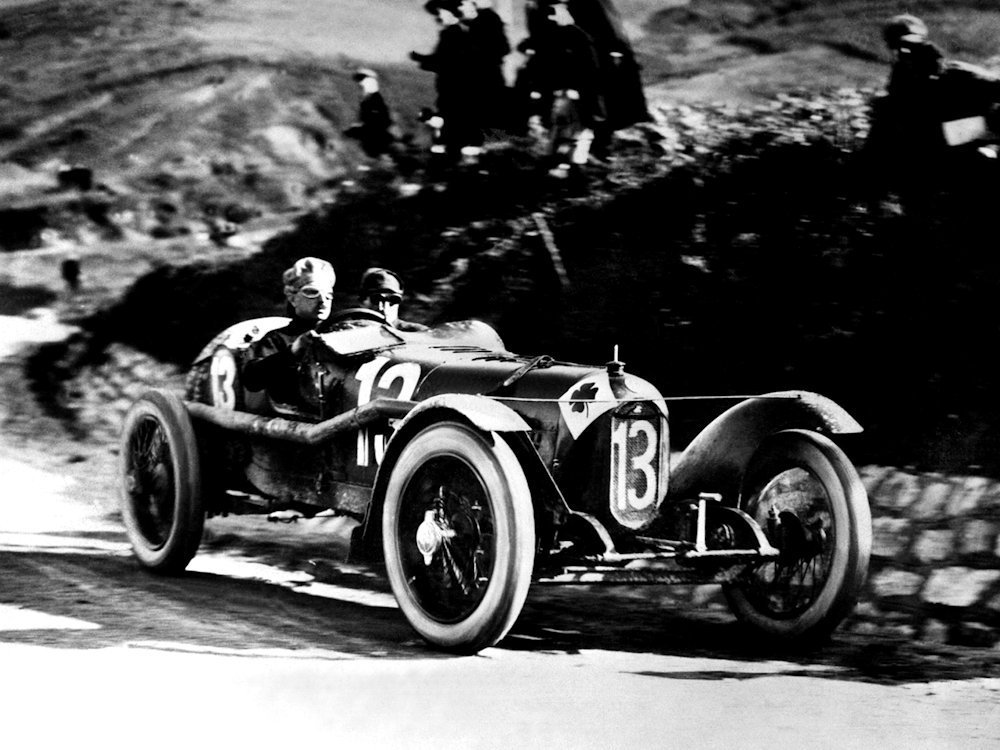
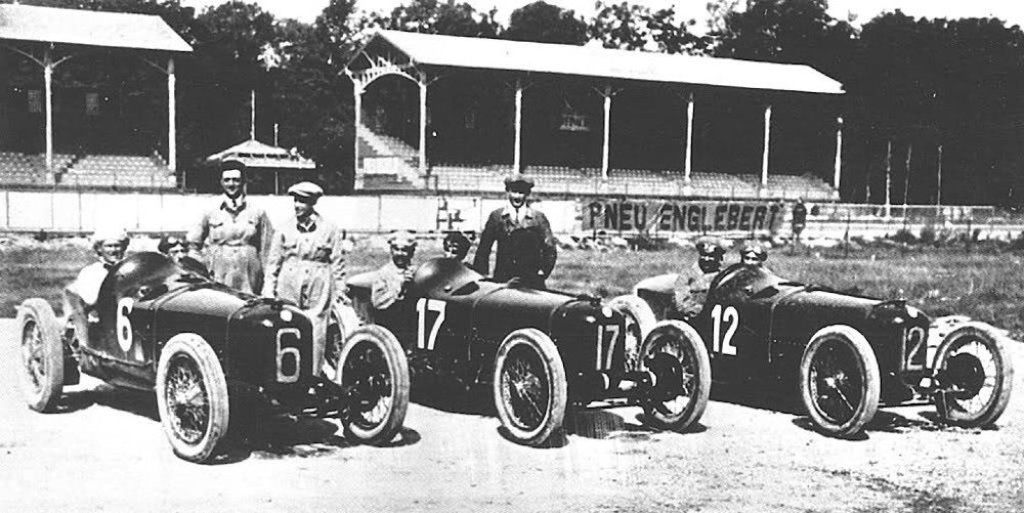
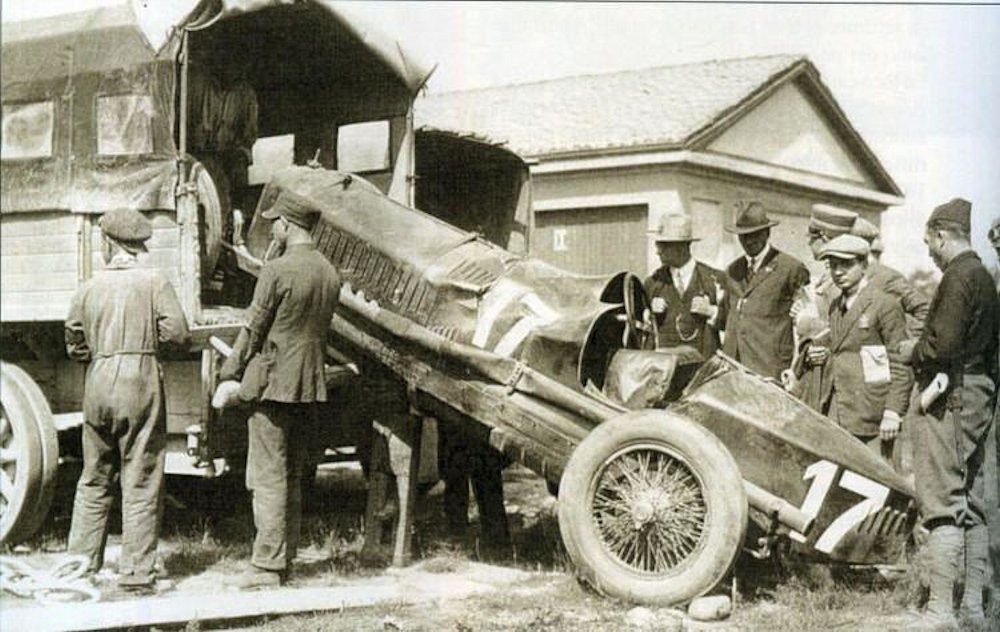
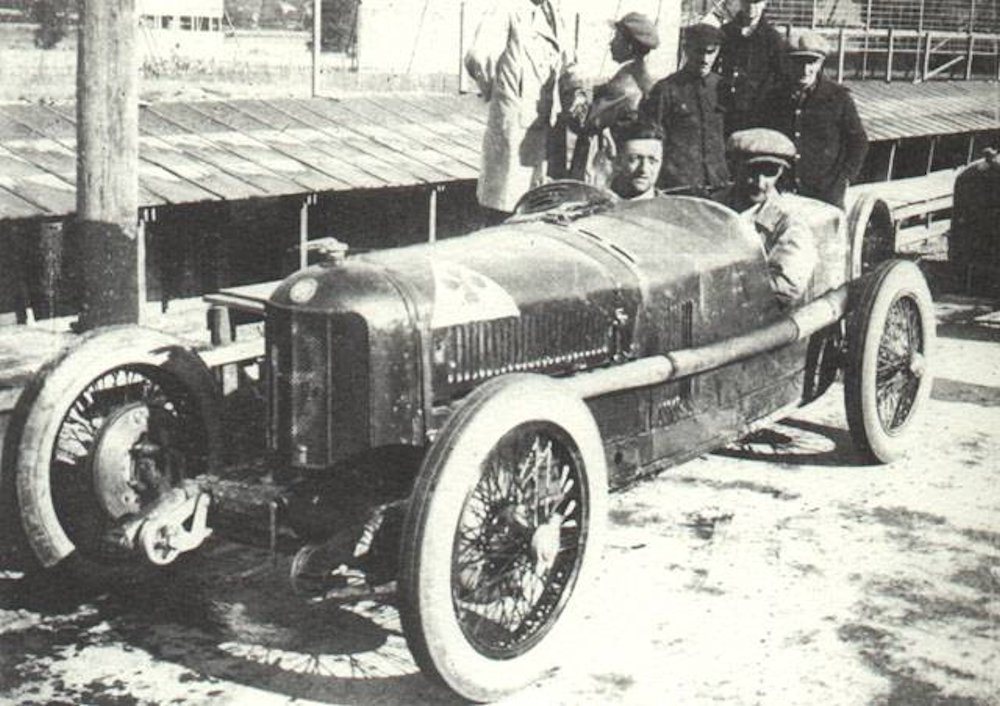
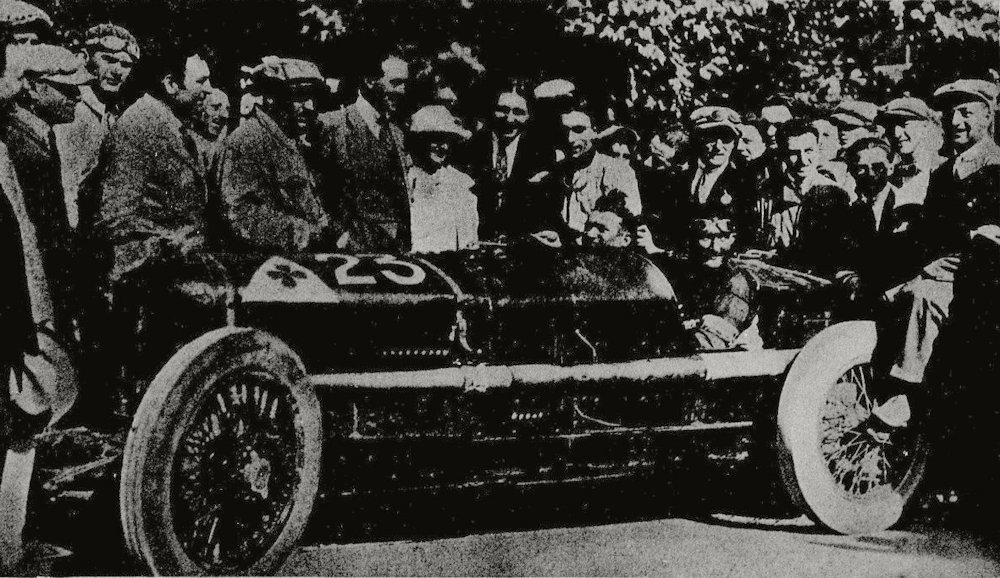
Antonio Ascari began racing cars at the top levels in Italy, using a modified 1914 Fiat. Along with Enzo Ferrari, he raced in the first Targa Florio held after the end of World War I in 1919, but did not finish after crashing. In 1922 he finished a strong fourth. Driving an Alfa Romeo, in April 1923, he narrowly lost the Targa Florio, finishing second to his Alfa Romeo teammate, Ugo Sivocci, the following month at the Cremona Circuit he drove to his first major Grand Prix victory. In 1924 win at Cremona in the first race of the P2, then went on to Monza where he won the Italian Grand Prix. In 1925 his car dominating the competition at the Circuit de Spa-Francorchamps when he won the inaugural Belgian Grand Prix.
At age 36 Ascari was killed while leading the 1925 French Grand Prix in an Alfa Romeo P2 in the first race at the new Autodrome de Montlhéry south of Paris. He crashed and died of his injuries on his way to hospital in Paris. He left behind a seven-year-old son, Alberto Ascari, Alberto Ascari would have a great Formula One Championship career, driving for Ferrari, Maserati and Lancia between 1950 – 1955. with 32 starts, 2 championships (1952, 1953), 13 wins and 17 podiums. In 1955 at age 36, Alberto Ascari’s crash on the Monza Eni Circuit when he test drove a Ferrari 750 Monza, he went to Monza to watch his friend Eugenio Castellotti test a Ferrari 750 Monza. They were to co-drive the car in the Monza race, Ascari was not supposed to drive that day but decided to try a few laps. As he emerged from a fast curve on the third lap the car inexplicably skidded, turned on its nose and somersaulted twice. Thrown out onto the track, Ascari suffered multiple injuries and died.
There were several similarities between the deaths of Alberto and his father. Alberto Ascari died on 26 May 1955, at the age of 36. Antonio Ascari was also 36 when he died, on 26 July 1925. Both were killed four days after surviving serious accidents and on the 26th day of the month. Both had crashed fatally at the exit of fast left-hand corners and both left behind a wife and two children. Also, both had won 13 championship Grands Prix. Another curiosity related to Alberto’s death is that the only other driver to crash into the harbour at Monaco in the circuit’s history, Paul Hawkins, also died on 26 May. Hawkins crashed into the harbour 10 years after Ascari, before dying when his Lola crashed into a tree at a Tourist Trophy race at Oulton Park in 1969.
Alberto Ascari Alberto Ascari accident scene on The Monza Eni Circuit (1955)
On 26 May, Alberto Ascari went to Monza to watch his friend Eugenio Castellotti test a Ferrari 750 Monza race car. Ascari was not supposed to drive that day but decided to try a few laps. As he emerged from a fast curve on the third lap the car inexplicably skidded, turned on its nose and somersaulted twice. Ascari was thrown out onto the track, he suffered multiple injuries and died a few minutes later.
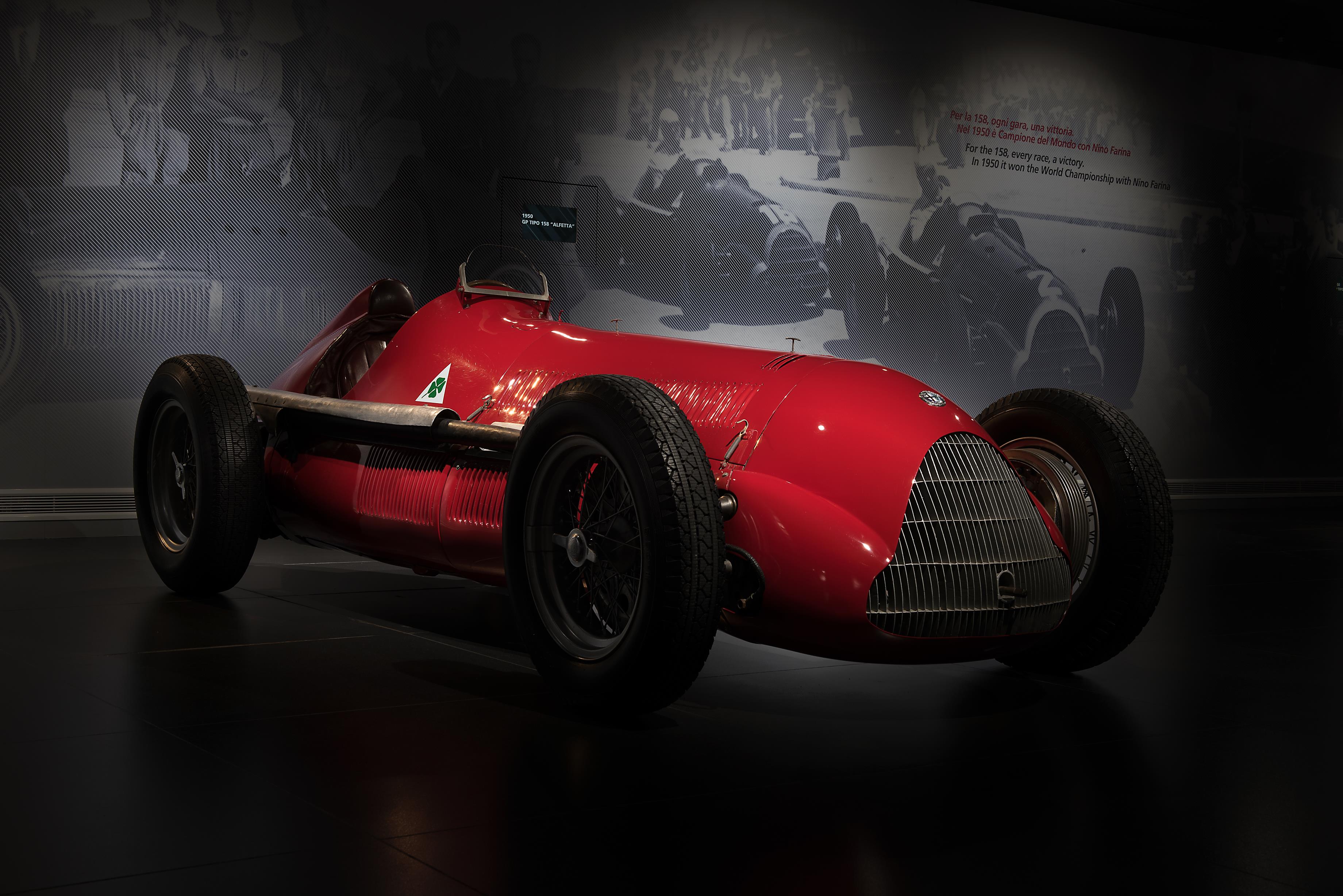
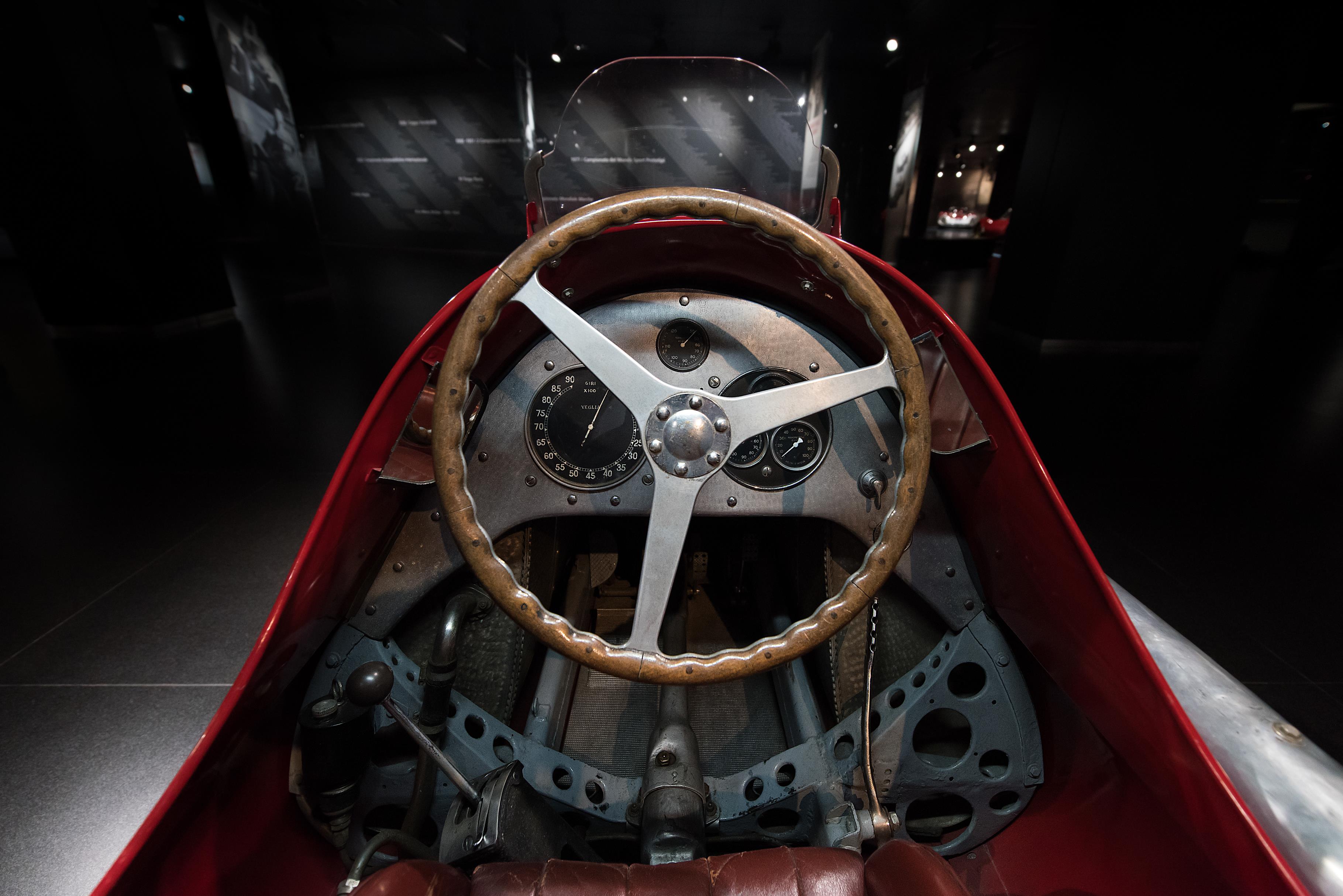
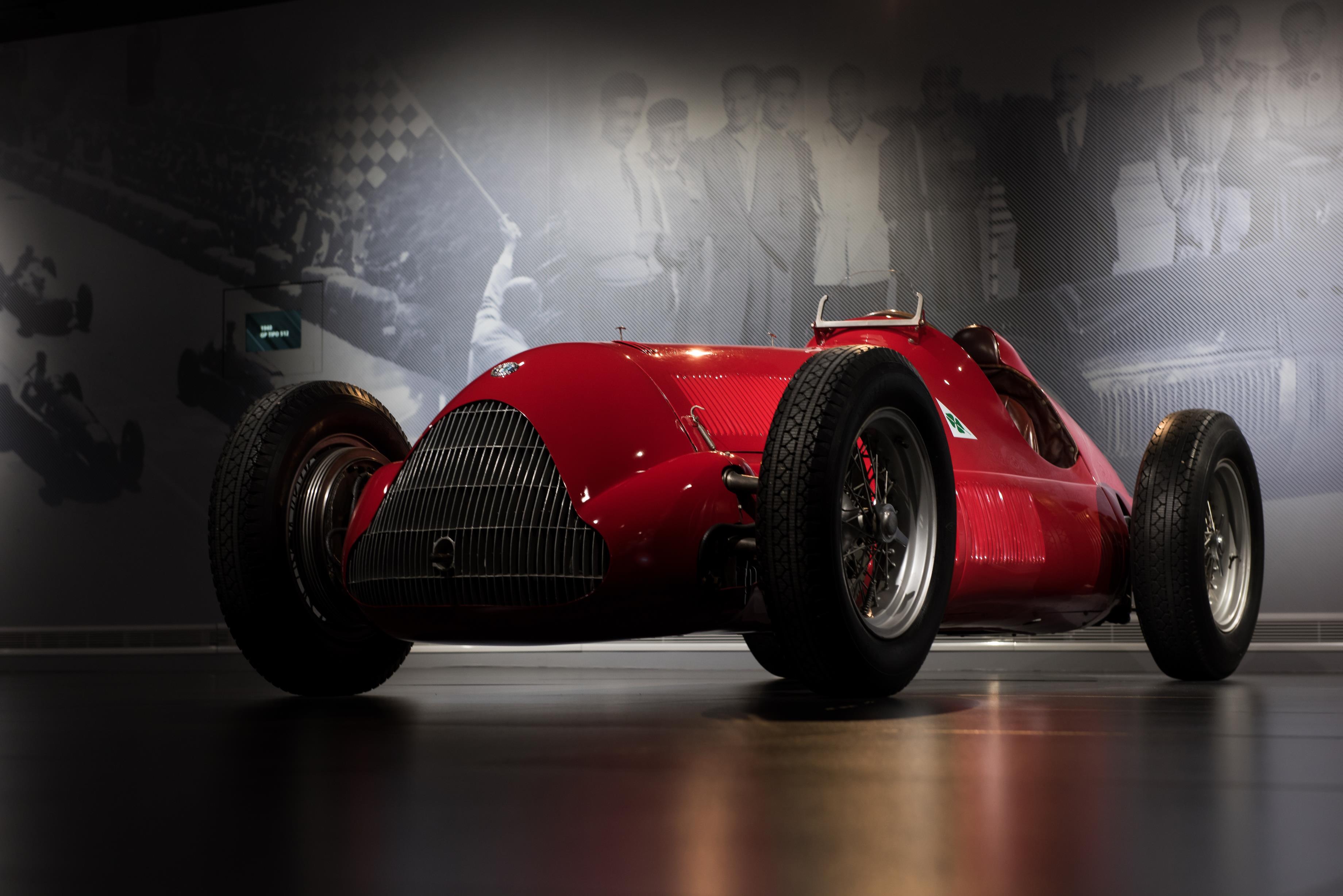
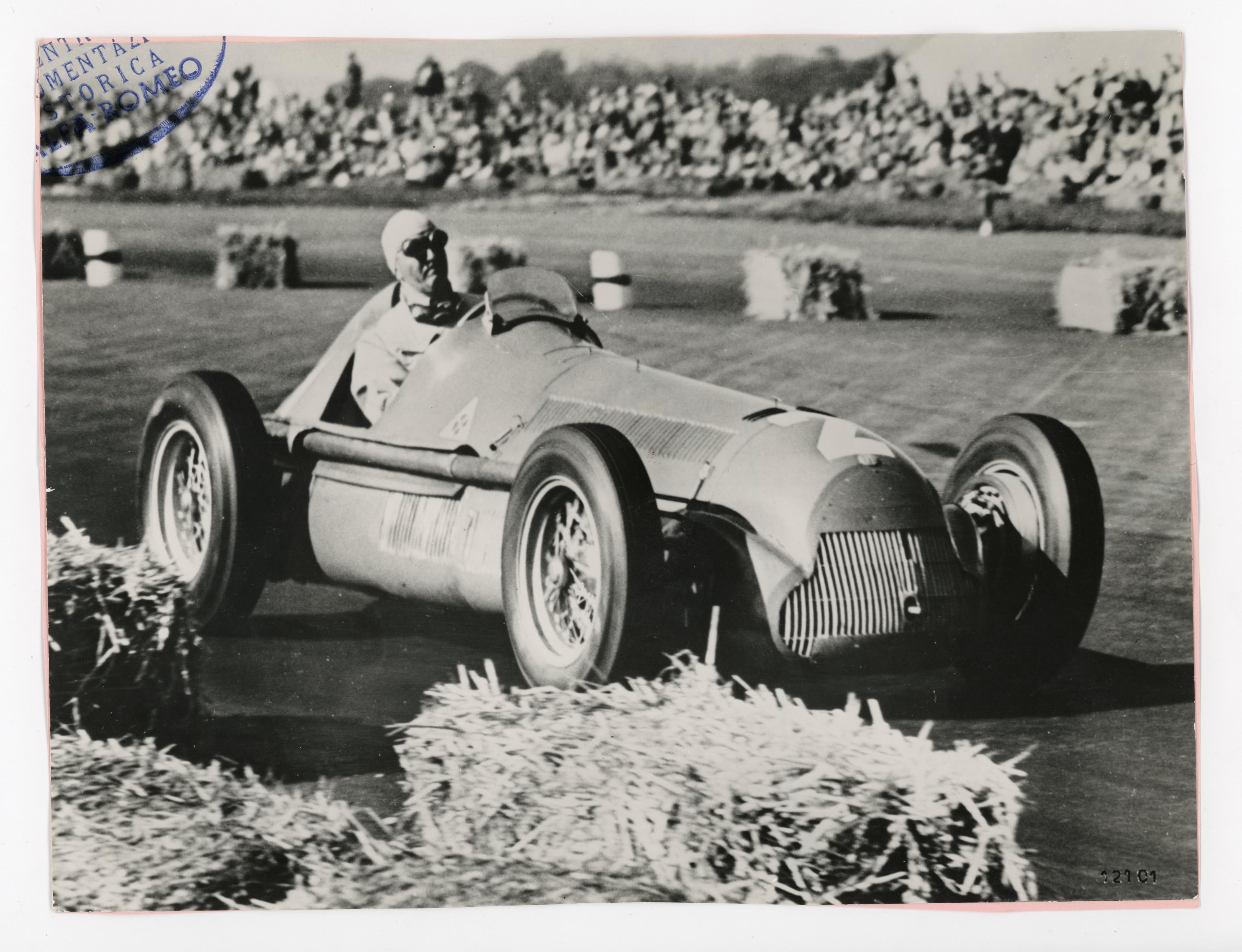
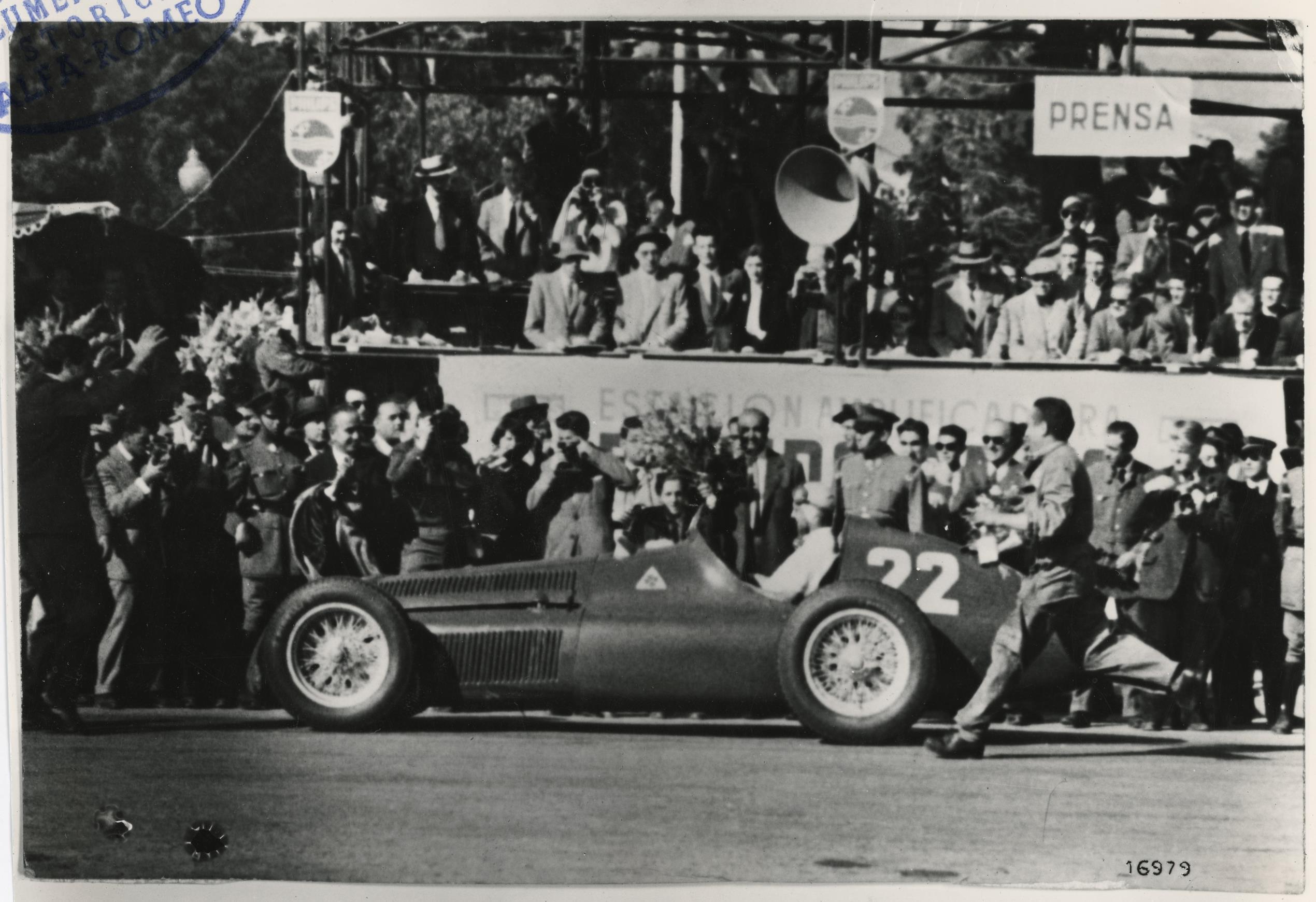
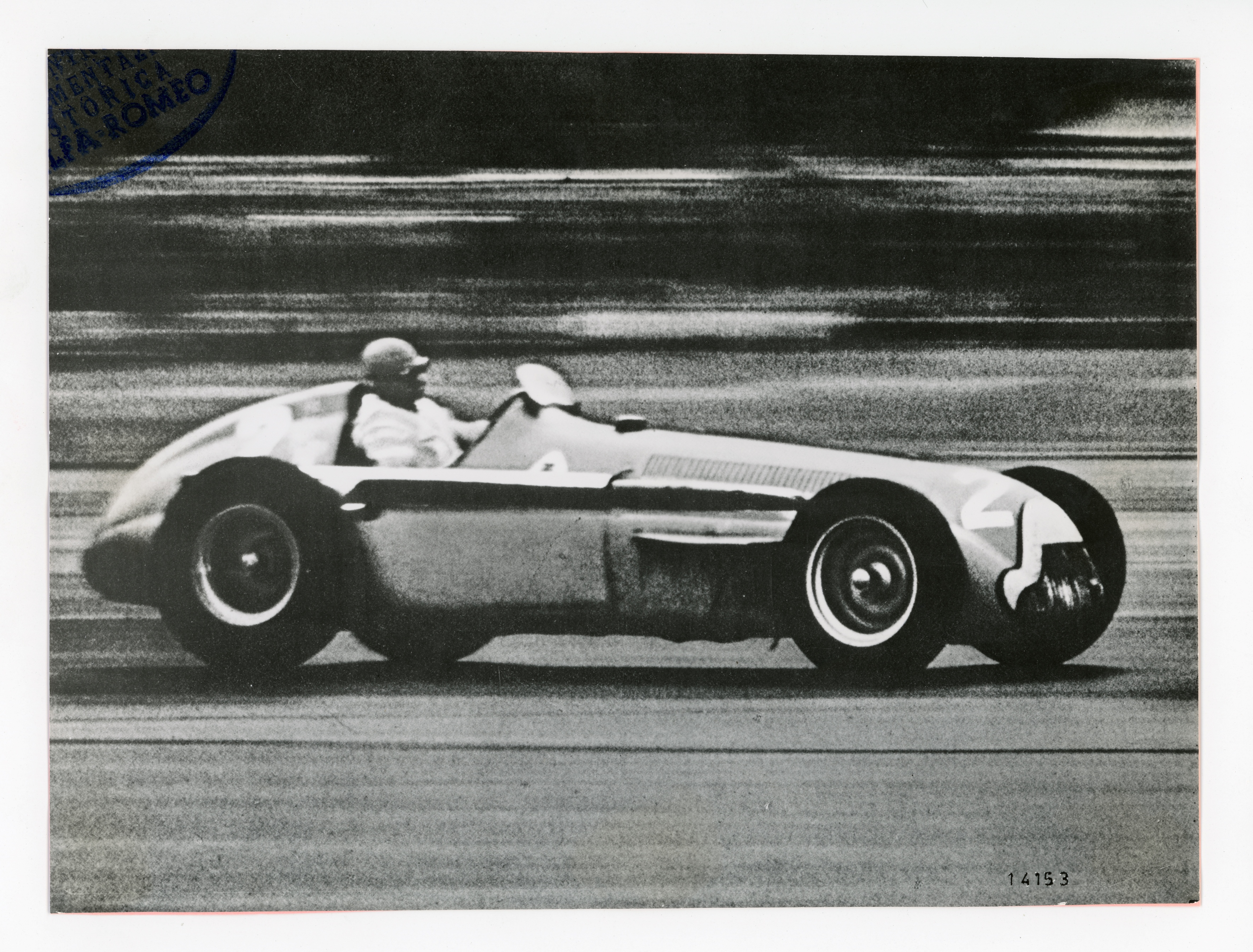
Alfa Romeo started motor racing almost immediately after it was founded. A.L.F.A. ventured into motor racing in 1911, with drivers Franchini and Ronzoni competing in the Targa Florio with two 24 HP models. The marque’s first success came in 1913 when Nino Franchini finished second in Parma-Poggio Berceto race with a 40-60HP. Giuseppe Merosi built a very advanced racing car in 1914, which was named “Grand Prix”. In 1920 Giuseppe Campari won the race at Mugello with a 40-60HP, whilst Enzo Ferrari was second in Targa Florio in the same year. A year later Giuseppe Campari won at Mugello again. Ugo Sivocci won the 1923 Targa Florio with an RL and Antonio Ascari took second. Sivocci’s car was painted with the green cloverleaf on a white background that was to become Alfa’s good luck token.
Alfa Romeo participated in Formula One, both as a constructor and engine supplier, from 1950 to 1987. The works Alfa Romeo team dominated the first two years of the Formula One World Championship, using the pre-war Alfetta, but withdrew from Formula One at the end of 1951. During the 1960s, several minor F1 teams used Alfa Romeo straight-4 engines and a V8 Alfa Romeo appeared in McLaren and March cars in the early 1970s. The Brabham team used Alfa Romeo engines from 1976 to 1979, foreshadowing a return by Alfa Romeo as a constructor from 1979 to 1985.
Alfa Romeo has won the following major victories and championships:
5 – World Championships (1925, 1950, 1951, 1975, 1977)
11 – Mille Miglia (1928, 1929, 1930, 1932, 1933, 1934, 1935, 1936, 1937, 1938, 1947)
10 – Targa Florio (1923, 1930, 1931, 1932, 1933, 1934, 1935, 1950, 1971, 1975)
4 – 24 Hours of Le Mans (1931, 1932, 1933, 1934)
15 – Australian Sports Sedan Championship (1980, 1981, 1994, 1998, 1999, 2001, 2002, 2005, 2007, 2011, 2014, 2015, 2016, 2019)
19 – European Touring Car Championships (1966, 1967, 1969, 1970, 1971, 1972, 1976 (Divisions 1 and 2), 1977 (Divisions 1 and 3), 1982, 1983, 1984, 1985, 2000, 2001, 2002, 2003, 2004)
9 – Makes Championship
4 – Drivers’ Championships
10 – Italian F3 Championships (1972, 1979, 1981, 1982, 1983, 1984, 1986, 1987, 1989, 1990)
10 – FIA European Formula 3 Championship (1980, 1981, 1982, 1983, 1984, 1985, 1986, 1987, 1989, 1990)
5 – Formula 3 Sudamericana Championship (1988, 1989, 1990, 1991, 1994)
8 – Mexican Formula Three Championship (1990, 1991, 1992, 1993, 1994, 1995, 1996, 1997)
5 – European F3 Cups (1985, 1986, 1987, 1989, 1990)
8 – Swiss Formula Three Championship (1983, 1989, 1990, 1991, 1992, 1998, 1999, 2002,)
7 – French F3 Championships (1981, 1983, 1984, 1985, 1987, 1988, 1989)
3 – Chilean Formula Three Championship (1991, 1992, 1993)
2 – German F3 Championships (1984, 1989)
2 – Austria Formula 3 Cup (1988, 1992)
2 – Swedish Formula 3 Championship (1987, 1988)
1 – Brazilian Formula Three Championship (1989)
6 – Coupe des Alpes (1956, 1958, 1960, 1963, 1964, 1966)
3 – Giro d’Italia automobilistico (1954, 1988, 1989)
2 – Trans-Am Championships (1966, 1970)
1 – Deutsche Tourenwagen Meisterschaft (DTM) (1993)
2 – British Touring Car Championship (BTCC) (1983, 1994)
5 – Spanish Touring Car Championships (1988, 1991, 1994, 1995, 1997)
2 – French Touring Car Championships (1983, 1984)
6 – Italian Superturismo Championship (1988, 1992, 1998, 1999, 2003, 2004)
7 – European Historical Gran Turismo Championships
4 – European Classic Touring Car Championships
3 – Bathurst Unique Fuel Championships
1 – Intereuropa Cup (1950)
1 – European Touring Car Cup (2005)
